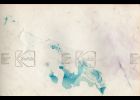From Sound to Sign: Writing as Worldmaking in Vilém Flusser and Walter J. Ong
Writing changes the world. Or so thought scholars Vilém Flusser and Walter J. Ong in the second half of the 20th century. This paper explores the ontological and epistemological consequences of the written word according to the complementary views of these two authors. The pre-eminence of language for the constitution of reality was a stance assumed by Vilém Flusser already in his first book (1963) and later developed throughout his career. In his view, linear thought as we know it now became possible as a result of the technology of writing. Flusser’s reading deeply resonates with the Ong’s study of the transition from oral to literate cultures, as the latter posits that the written record allowed for a reformulation of thinking itself, an opening of the possibilities we know today. Although they wrote in different contexts, the questions they tackle and the conclusions they reach have profound similarities. For comparison, this study relies mainly on ideas found mainly in two seminal publications: Língua e Realidade [Language and Reality] by Vilém Flusser, and Orality and Literacy: the technologizing of the word, by Walter J. Ong.
Camera: Modern City and Photography
The connection between modern city and photography has not been frequently dealt with. However, looking into the sphere created by this unusual conceptual pair reveals significant traits of contemporary culture. The article undertakes this task by referring to the notion of a camera – an apparatus used to take pictures, but also an idea carrying connotations that originated long before the invention of the device. These characteristics are discussed through Vilém Flusser’s approach to the philosophy of photography.
Perspectivação e temporalidades (cosmo)técnicas (imaginativas): o livro-roteiro Angenommen como a culminação da escritura flusseriana / Perspectivation and (Cosmo)technical (Imaginative) Temporalities ...
This paper analyzes key passages of Vilém Flusser’s Angenommen from the point of view of the functioning of his writing. Starting out from the Flusserian theory of techno-imagination, the notion of anthropophagy (Oswald de Andrade), the concept of techno-diversity proposed by Yuk Hui and the Nietzschean doctrine of the eternal return the article proposes that the Angenommen constitutes a fundamental contribution to the problem of the destiny of philosophy. The text fits into a tradition of texts that proposes an intimate relationship between the eternal return, ghostliness, revolution, technique, and possibilities/potentialities. From Leibniz, to Benjamin, as well as Nietzsche and Blanqui, the idea of a possible world focused on the significance of temporality in Modernity. Angenommen institutes a circularity, a potential eternal return in the singular events that go beyond the circularity of past and future history based on the fictional hesitation of (un)probable possibilities. The apparent quasi-dialectical movement of the book proves to be a hellish circle from which there is no way out. The paradox at the heart of the work is that the freedom of imagination of (un)probable heterochronotopic scenarios is constrained by the instinctual repetition of anti-entropic principles. The (im)probably (im)possible phantasmagories replicate, as philosofictions, reality as a trauma.
Kurtis’ “Vandalised“ Photographs: On the Problem of Technical Images in Post-Documentary Photography
Walter Benjamin’s “Work of art in the age of its mechanical reproduction” and Vilém Flusser’s Filosofia da caixa preta have defined photography as a key problem towards developing a philosophy of technology. I’ll discuss their concepts in relation to experimental practices in post-documentary photography which I consider a fertile ground to discuss the similarities and differences underlying different approaches to technology in Flusser and Benjamin.
To contrast Benjamin’s mechanical reproducibility and Vilém Flusser’s technical images, I would like to analyse the processes of regaining an aura by means of a subversion of the photographic technology in contemporary photography. The creative intervention on the photographic camera, the process and results involved in Argentinean photographer Seba Kurtis’ images of contemporary migrants offer an interesting case to discuss these problems.





